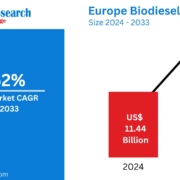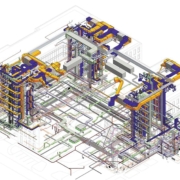Saudi Arabia Entertainment and Amusement Market Forecast 2025–2033: Trends, Segmentation, and Strategic Insights
Saudi Arabia Entertainment and Amusement Market Growth Insights (2024–2033)
Saudi Arabia Entertainment and Amusement Market to Reach US$ 6.10 Billion by 2033, Driven by Technological Innovations and Increasing Disposable Incomes
Riyadh, Saudi Arabia – The Saudi Arabia Entertainment and Amusement Market is poised for rapid growth, with projections indicating it will reach US$ 6.10 billion by 2033, up from US$ 2.46 billion in 2024. This growth is driven by a compound annual growth rate (CAGR) of 10.61% from 2025 to 2033. The sector is increasingly benefiting from technological advancements, especially in virtual reality (VR) and augmented reality (AR), which are transforming how consumers engage with entertainment.
The Saudi Arabian government’s Vision 2030, designed to diversify the economy away from oil dependency, plays a key role in shaping the entertainment and amusement landscape. Large-scale investments, infrastructure development, and the flourishing tourism sector are driving the growth of leisure experiences, including theme parks, cinemas, malls, and gaming centers.
Key Drivers of Market Growth:
- Technological Advancements: The integration of VR, AR, and high-definition technologies into entertainment experiences has captivated audiences, offering immersive and dynamic interactions across entertainment destinations.
- Infrastructure Investments: Mega-projects like NEOM, Qiddiya, and the Red Sea Project are advancing Saudi Arabia’s entertainment infrastructure, with family entertainment centers, amusement parks, and cultural spaces springing up across the Kingdom.
- Young Population and High Spending: With over 60% of the population below the age of 34, Saudi Arabia’s youthful demographic is a primary driver of demand for entertainment. Consumers are spending more on leisure activities, particularly in amusement parks, cinemas, and live events.
- Government Initiatives: Vision 2030 and various public-private partnerships are spurring growth in the entertainment sector. The lifting of the 35-year cinema ban in 2017 and projects like Qiddiya are accelerating the development of world-class entertainment facilities.
Challenges to Market Growth:
Despite the promising growth prospects, the Saudi Arabian entertainment sector faces challenges, including regulatory complexities, dependency on tourism, and the need to balance entertainment with cultural and religious sensitivities in cities like Makkah.
Market Segmentation Insights:
- Type of Entertainment Destination: Cinemas and theatres, amusement parks, malls, gaming centers, and others are key destinations for consumers.
- Source of Revenue: Revenue streams include tickets, food and beverages, merchandise, advertising, and others.
- City-wise Analysis: Riyadh, Jeddah, Makkah, Dammam, and other regions each contribute uniquely to the market, with Riyadh and Jeddah emerging as key growth hotspots.
New Publish Reports
- Saudi Arabia Whiskey Market Size and Share Analysis – Growth Trends and Forecast Report 2025-2033
- Saudi Arabia Wine Market Size and Share Analysis – Growth Trends and Forecast Report 2025-2033
- Saudi Arabia Foodservice Market Size and Share Analysis – Growth Trends and Forecast Report 2025-2033
- Saudi Arabia Quick Service Restaurants Market Size and Share Analysis – Growth Trends and Forecast Report 2025-2033
Top Companies Driving Market Innovation:
- Al Hokair Group
- Fakieh Group
- Saudi Aramco Amusement Park
- E-PLUS (Event Plus)
- Time Entertainment
- First Entertainment Company
Market Outlook: The Saudi Arabia Entertainment and Amusement Market is expected to continue flourishing, driven by increasing investment in infrastructure, government support, and the growing demand for diverse and immersive entertainment experiences. By 2033, the market will not only see technological advancements but also the creation of new, globally competitive entertainment hubs.
Frequently Asked Questions (FAQs)
1. What is the current size of the Saudi Arabia Entertainment and Amusement Market?
- The Saudi Arabia Entertainment and Amusement Market is currently valued at US$ 2.46 billion in 2024 and is projected to reach US$ 6.10 billion by 2033.
2. What are the primary drivers of growth in the Saudi Arabia entertainment sector?
- Growth is driven by technological innovations (especially in VR and AR), large-scale infrastructure investments like NEOM and Qiddiya, a young and high-spending population, and government initiatives under Vision 2030.
3. How has Vision 2030 impacted the entertainment sector?
- Vision 2030 has fueled growth by diversifying the economy, lifting the 35-year cinema ban, and launching projects like Qiddiya and the Red Sea Project, which are creating world-class entertainment facilities.
4. Which cities in Saudi Arabia are contributing the most to the entertainment market?
- Riyadh, Jeddah, Makkah, and Dammam are the primary cities driving market growth, with Riyadh and Jeddah seeing the largest investments in entertainment infrastructure.
5. What are the main revenue sources in the Saudi Arabian entertainment industry?
- The key revenue sources include ticket sales, food and beverage purchases, merchandise, and advertising revenue across various entertainment destinations.
6. What challenges does the Saudi Arabian entertainment market face?
- The industry faces challenges such as regulatory hurdles, reliance on tourism, and the need to balance entertainment development with cultural and religious sensitivities, especially in cities like Makkah.
7. What types of entertainment destinations are most popular in Saudi Arabia?
- Popular entertainment destinations include cinemas, amusement parks, malls, gaming centers, and cultural spaces.
8. Which companies are leading the entertainment market in Saudi Arabia?
- Key players in the Saudi Arabian entertainment market include Al Hokair Group, Fakieh Group, Saudi Aramco Amusement Park, E-PLUS (Event Plus), and Time Entertainment.
9. How can businesses capitalize on opportunities in this market?
- Businesses can capitalize on this growing market by investing in immersive technologies, expanding into new cities, and aligning with Vision 2030’s development initiatives in the entertainment sector.
For more details, custom reports, and analysis, businesses are encouraged to reach out to our experts for tailored insights into the Saudi Arabia Entertainment and Amusement Market.






